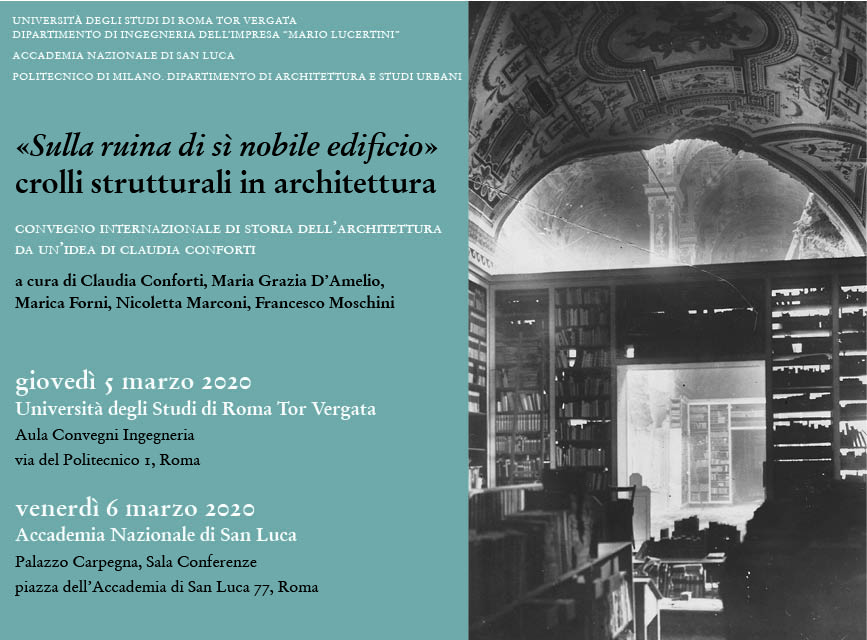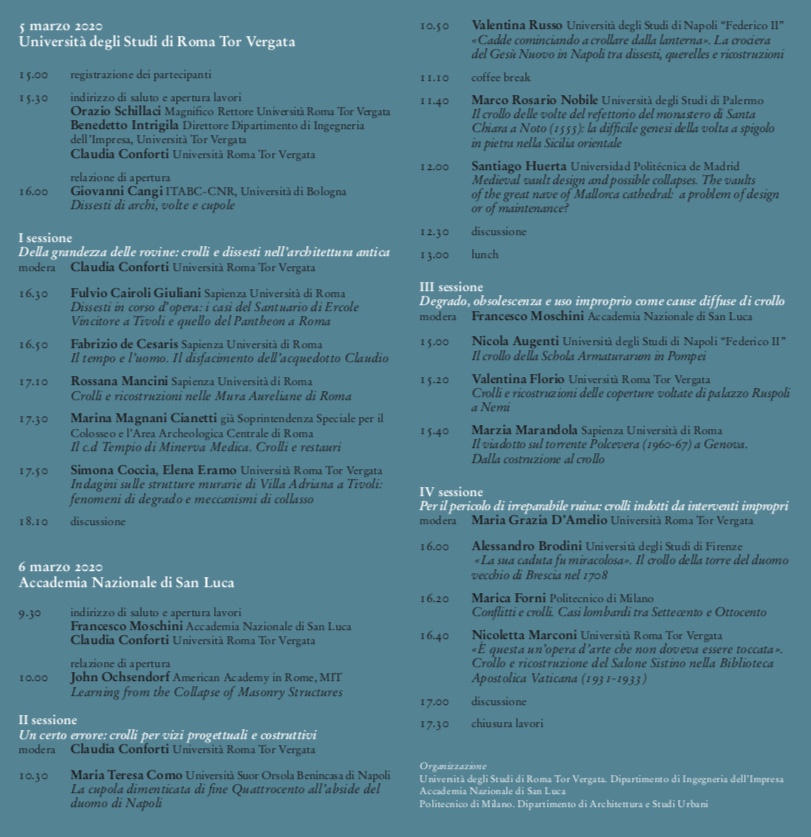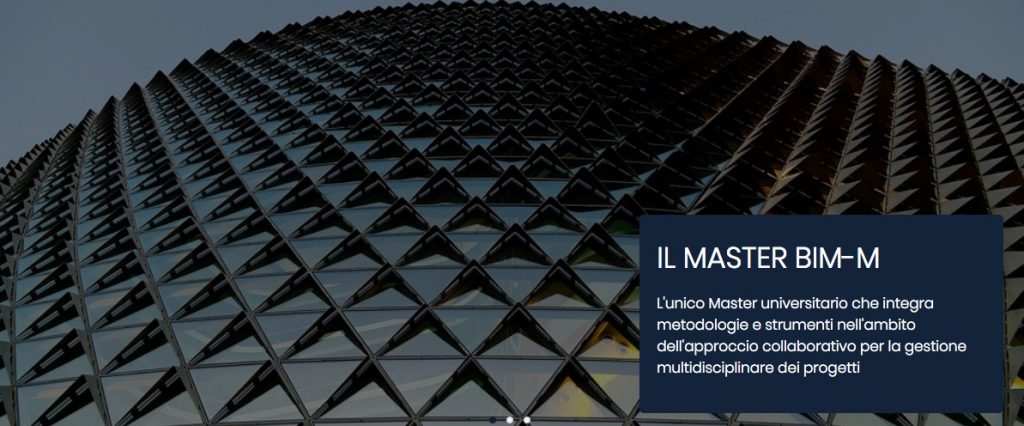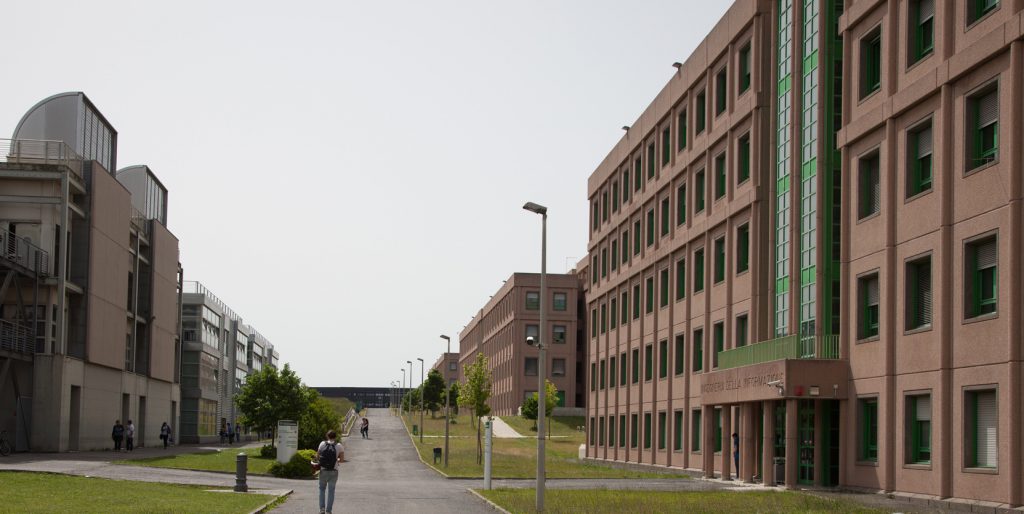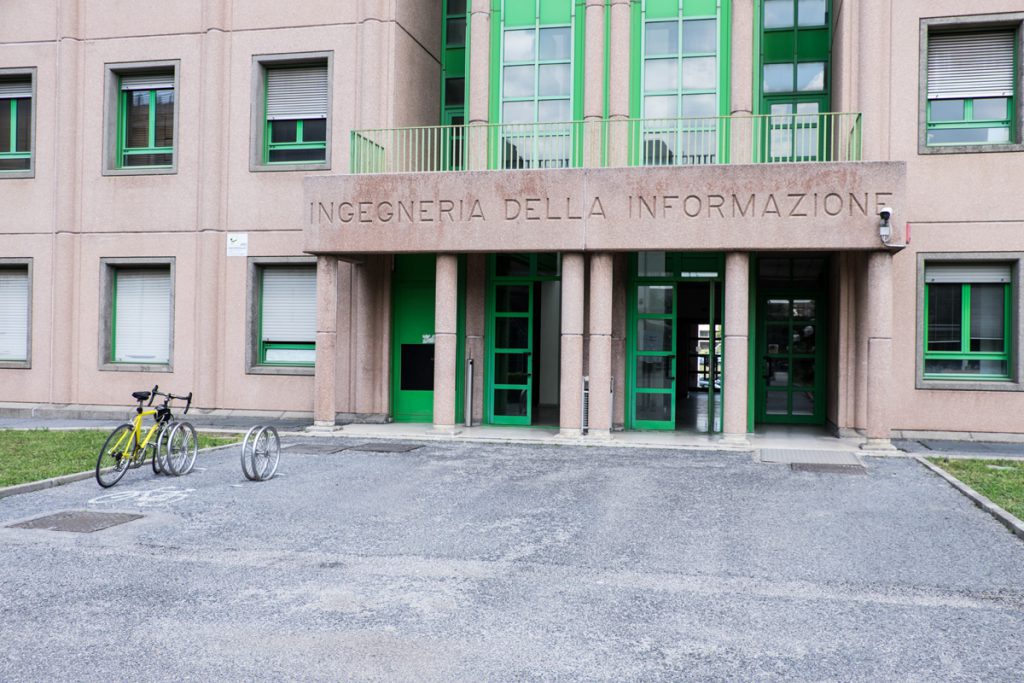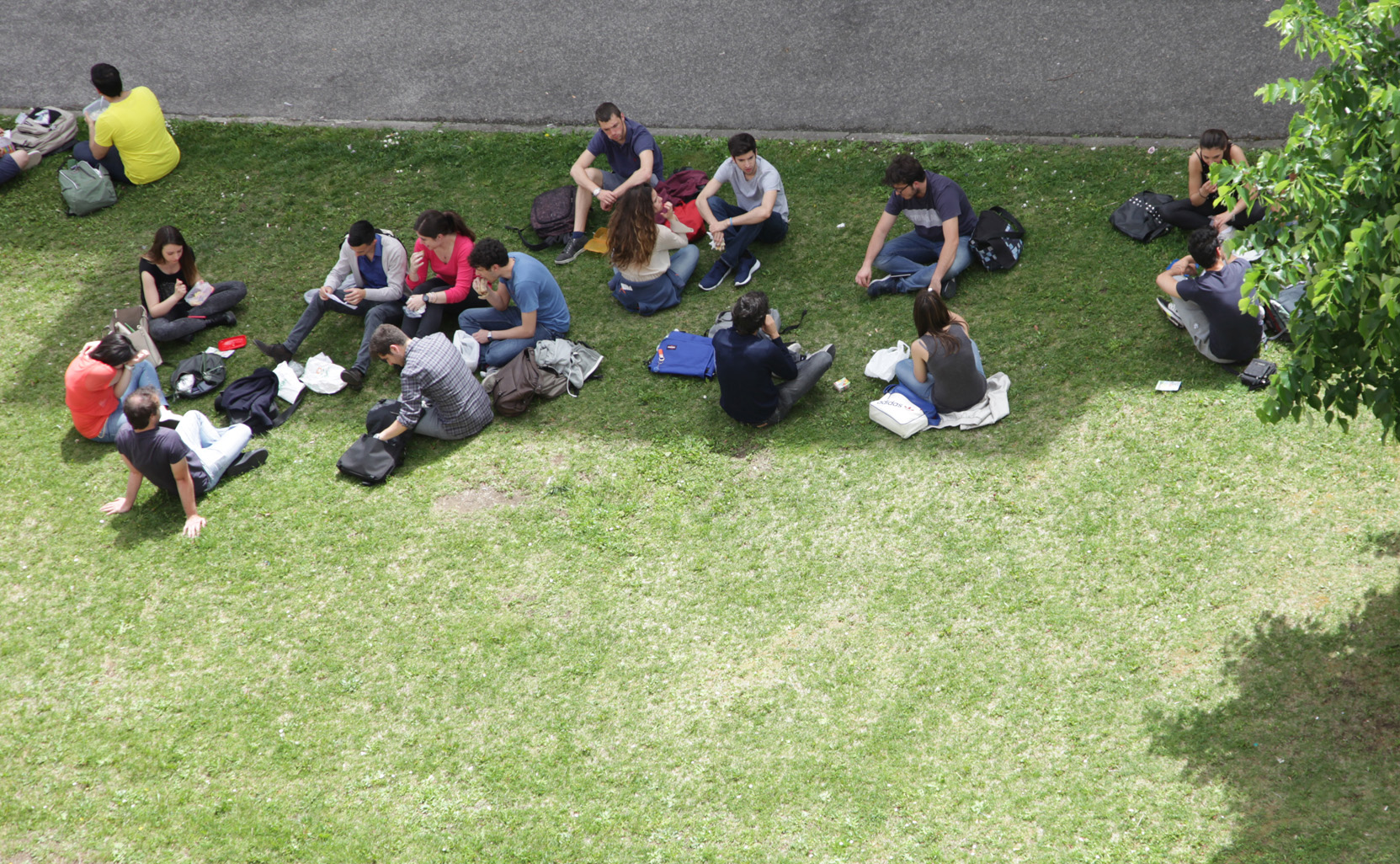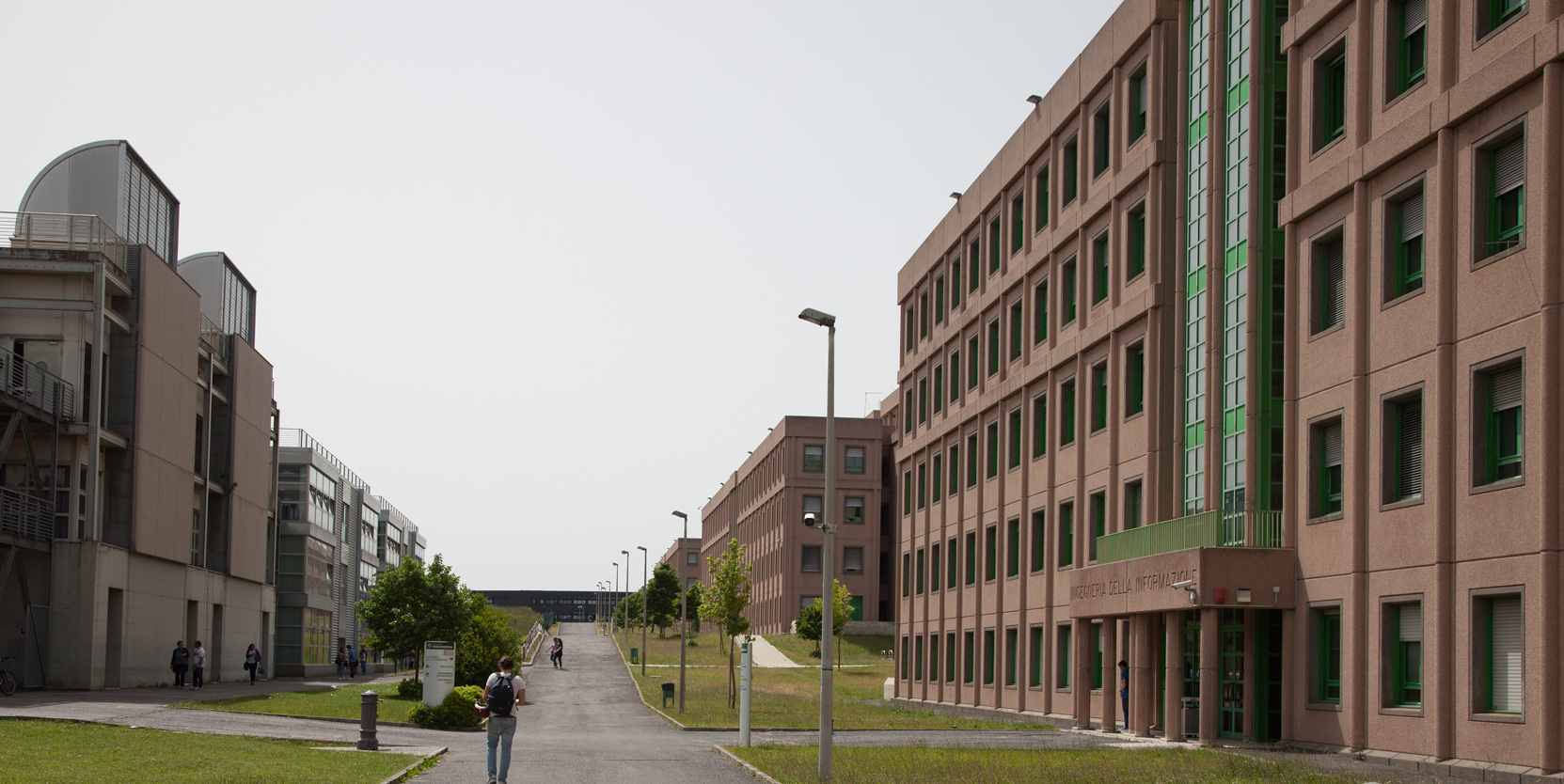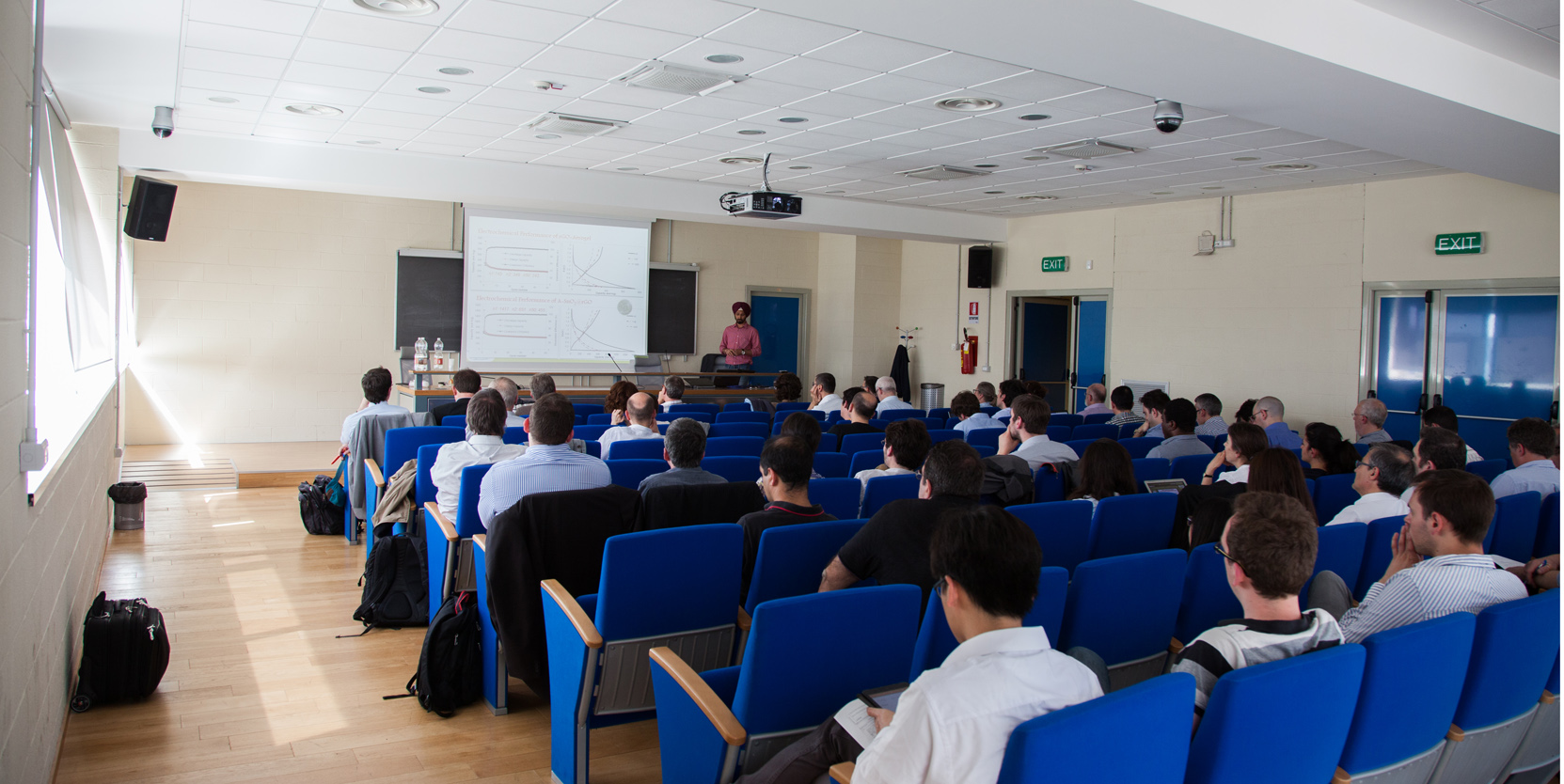RINVIATO. Per le generali necessità inerenti spazi chiusi e limitati, il convegno è rinviato. A breve saranno comunicate nuove date.
Avrà doppia sede il convegno internazionale di Storia dell’Architettura «Sulla ruina di sì nobile edificio», crolli strutturali in architettura nato da un’idea della professoressa Claudia Conforti: il convegno, a cura di Claudia Conforti, Maria Grazia D’Amelio, Marica Forni, Nicoletta Marconi, Francesco Moschini si svolge nelle giornate del 5 marzo presso Università di Roma Tor Vergata nell’Aula Convegni Edificio della Didattica di Ingegneria e il 6 marzo all’Accademia Nazionale di San Luca a Palazzo Carpegna, Sala Conferenze.
Il convegno è stato organizzato da
Università degli Studi di Roma Tor Vergata, Dipartimento di Ingegneria dell’Impresa
Accademia Nazionale di San Luca
Politecnico di Milano, Dipartimento di Architettura e Studi Urbani
Il collasso degli edifici, o di parti di essi, non è causato solo da sismi, disastri naturali o incendi, ma può essere l’esito di vizi progettuali o costruttivi, di degrado, di obsolescenza funzionale e di uso improprio. I recenti crolli che si sono verificati in Italia, concentrati in pochi giorni – il tetto di San Giuseppe dei Falegnami e un tratto della rupe Tarpea a Roma, il ponte sul Polcevera a Genova – hanno svelato la tragica fragilità del patrimonio monumentale, artistico e infrastrutturale, questi ultimi anche con inevitabili ricadute sul funzionamento e sull’economia delle città e sul loro rapporto con l’intorno regionale e il territorio nazionale.
Talvolta i crolli sono sopravvenuti (come nei casi procurati da incendi) in concomitanza con momenti di particolare vulnerabilità dell’edificio, vale a dire durante i cantieri di restauro o in seguito a interventi strutturali. Alla sequenza di grandi imprese che costituisce la storia dell’architettura, andrebbe dunque aggiunta la serie di insuccessi costruttivi, altrettanto istruttivi, nonché fonte preziosa di esperienza per l’avanzamento della ricerca sperimentale e della tecnica costruttiva.
Articolato in quattro sessioni tematiche – organizzate in categorie di carattere generale attinenti alle variabili interne ai processi del progetto, della produzione e della manutenzione dell’architettura – e nel condiviso intento di superare le tradizionali divisioni disciplinari, il convegno si pone quale occasione di confronto su casi studio selezionati tra i più clamorosi episodi di crollo strutturale, al fine di sollecitare riflessioni utili all’avvio della redazione di una storia dei crolli strutturali nell’architettura di tutte le epoche.

